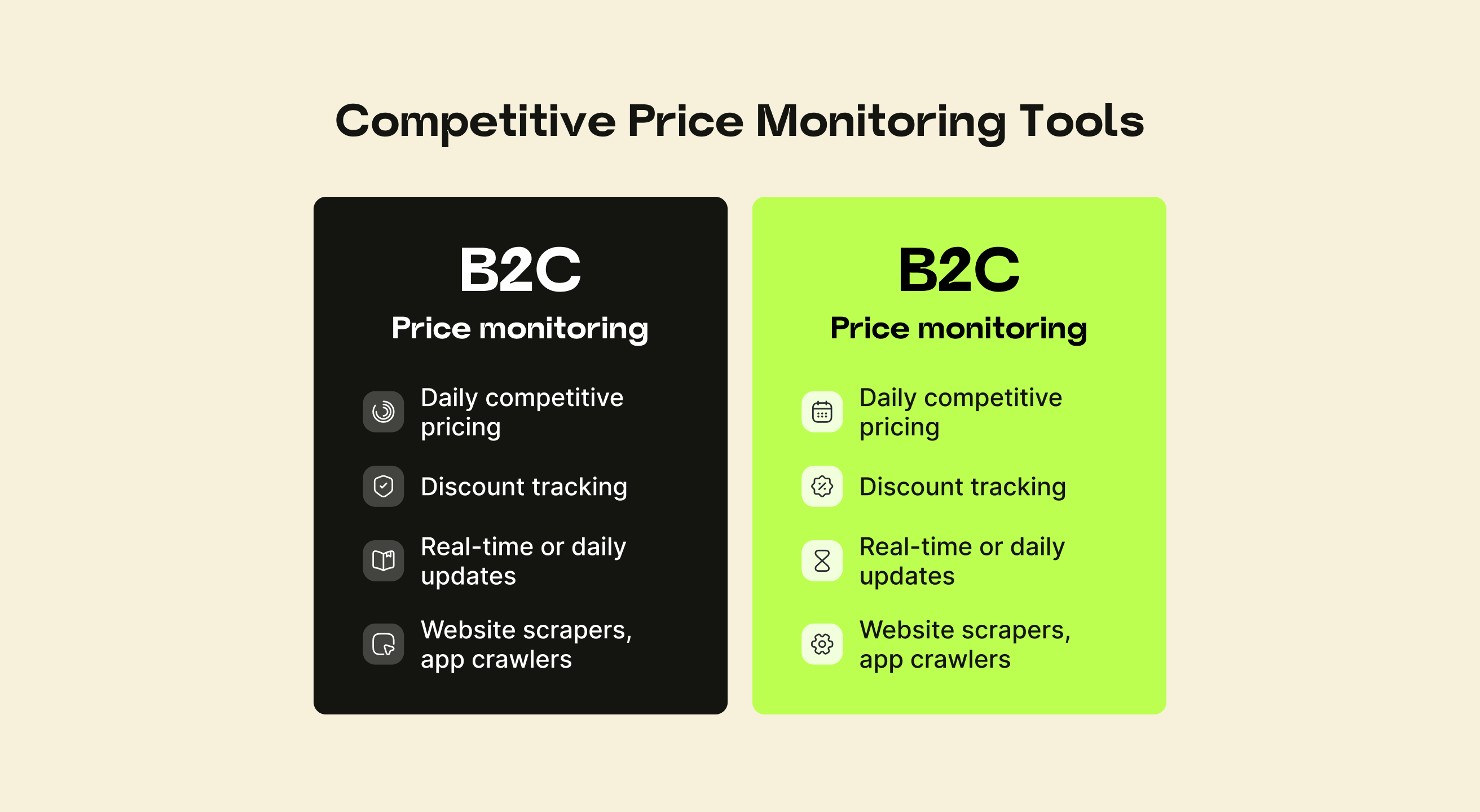Introduction
In today’s highly competitive retail and wholesale environment, staying on top of competitor pricing is not optional — it’s essential. Whether you’re in B2B or B2C, having access to real-time price data helps protect margins, ensure MAP compliance, and inform strategic decisions. This guide explores the best competitive price monitoring tools and how to build a scalable price intelligence stack.
Best Tools for Competitor Price Tracking
Modern price monitoring tools allow retailers and wholesalers to automatically collect and analyze competitors’ product prices from websites, marketplaces, and apps.
Key features to look for:
- Real-time price tracking
- Dynamic pricing triggers
- Image and text-based product matching
- Alerts for price drops or surges
- Dashboards with category, brand, and retailer-level views
Popular tools include:
- ScrapeWise – Best for automated product matching and regional pricing insights
- Prisync – Great for eCommerce and Shopify integrations
- Skuuudle – Strong in B2B catalog tracking
- Price2Spy – Offers MAP monitoring and detailed price history
B2B vs B2C Price Monitoring Strategies
While both B2B and B2C sectors benefit from competitor price monitoring, the strategies and tools they use differ significantly.
Use Case:
- B2C brands monitor daily competitive pricing, flash sales, and discount campaigns.
- B2B companies focus on long-term pricing trends and benchmarking distributor price lists.
Frequency:
- B2C monitoring is typically real-time or updated daily to stay agile in fast-moving consumer markets.
- B2B monitoring is often weekly or monthly due to slower pricing cycles and longer-term contracts.
Tools Used:
- B2C companies rely on website scrapers, app crawlers, and promotional monitoring tools.
- B2B companies lean on ERP-integrated trackers and PDF catalog extractors to access pricing hidden behind portals or in downloadable price lists.
Strategic Focus:
- B2C pricing is shaped by consumer price sensitivity and seasonal demand.
- B2B pricing prioritizes margin protection, volume discounts, and contract-based pricing consistency.
B2B pricing is often negotiated and hidden behind logins or PDF catalogs, so tools must be more tailored and secure.
Monitoring MAP Violations with Web Scraping
Minimum Advertised Price (MAP) policies protect brand value and reseller margins. But without automation, enforcing MAP compliance is nearly impossible.
How web scraping helps:
- Detects public listings that undercut your MAP
- Sends automated violation alerts
- Generates evidence reports for enforcement
- Tracks repeat offenders across marketplaces and regions
This is especially critical for brands selling via multiple third-party retailers.
Building a Competitive Intelligence Stack
A robust competitive intelligence stack goes beyond price tracking. It includes tools for:
- Product matching: To ensure accurate comparisons (e.g., ScrapeWise AI matching)
- Promotional monitoring: Tracking campaigns, banners, and discount depth
- Analytics dashboards: Visualizing pricing trends, positioning, and gaps
- Alerting systems: Notifying teams when thresholds are breached
- Integrations: Sync with ERP, CRM, and pricing engines for faster reaction
Leading retailers combine scraping tools with in-house dashboards to centralize all pricing intelligence.
ROI of Automated Price Monitoring
Still wondering if it’s worth it? Here’s how businesses see measurable returns:
- +8–15% increase in price competitiveness
- +10% improvement in margins by reducing underpricing
- +30% time saved on manual competitor checks
- Faster response to market changes → higher conversion rates
Retailers who automate pricing insights make decisions based on real-time data, not guesswork — leading to better profitability and customer trust.
Conclusion
Whether you’re a brand, retailer, or wholesaler, competitive price monitoring tools are now a strategic necessity. The best platforms offer not only pricing insights but automation, product matching, and MAP compliance at scale. By choosing the right tools and building a smart price intelligence stack, your business can stay ahead — not just keep up.

